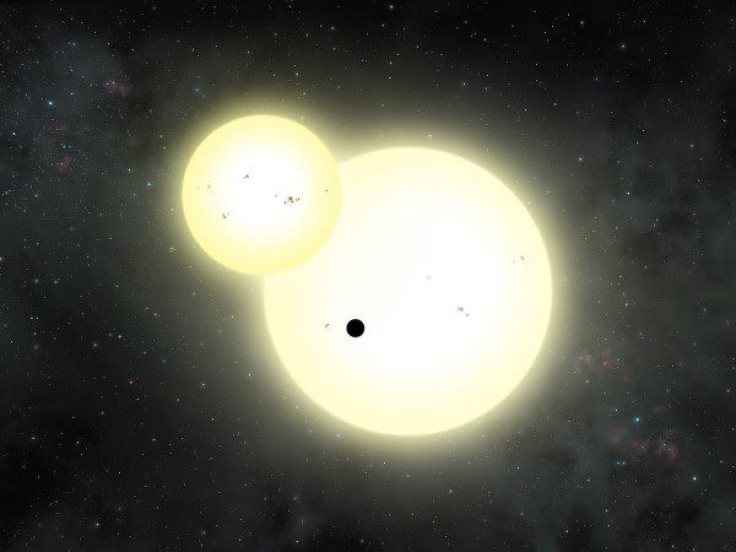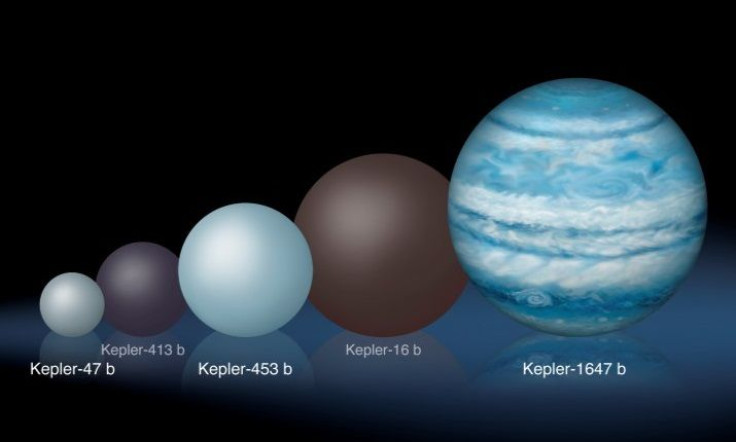A Jupiter-Like Alien World Orbiting Two Sun-Like Stars Is The Largest Ever Spotted In A Two-Star System

A team of scientists has discovered the largest planet yet orbiting a two-star system. The circumbinary planet — à la Tatooine of "Star Wars" — has a mass and radius nearly identical to that of Jupiter, and the stars it orbits are similar to our sun, with one slightly larger than our star and the other slightly smaller.
The discovery, announced Monday and detailed in a paper accepted for publication in the Astrophysical Journal, was made using NASA’s planet-hunting space telescope Kepler. The star system is located 3,700 light-years from Earth and is almost as old as ours — 4.4 billion years.
“It’s a bit curious that this biggest planet took so long to confirm, since it is easier to find big planets than small ones,” San Diego State University astronomer Jerome Orosz, a co-author of the study, said in a statement. “But it is because its orbital period is so long.”
The planet, named Kepler-1647b, completes one orbit around its parent star in 1,107 days — the longest period of any confirmed exoplanet found so far. Although the planet’s orbit places it in the so-called Goldilocks zone — the range of distances in a star’s orbit that provide conditions for life as we know it to exist — it is probably hostile to life, as it’s a gas giant similar to Jupiter.

However, if the planet has moons, they may sustain life — again, much like Jupiter.
“Habitability aside, Kepler-1647b is important because it is the tip of the iceberg of a theoretically predicted population of large, long-period circumbinary planets,” co-author William Welsh, an astronomer at the San Diego State University, said in the statement.
In the cosmic scheme of things, planets orbiting two stars are believed to be quite common — although not as common as planets orbiting one star. However, detecting such planets is not as easy as discovering their one star counterparts.
“The transits are not regularly spaced in time and they can vary in duration and even depth,” Welsh said.
Kepler-1647b is the latest in the string of exoplanet discoveries by Kepler, which has so far been used to detect over 2,300 exoplanets. Of these, 21 are about the same size as Earth and are locked in the Goldilocks zone around their parent star, making them prime candidates for life as we know it to exist.
© Copyright IBTimes 2024. All rights reserved.












